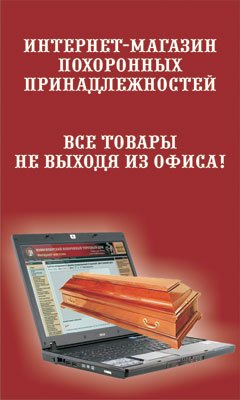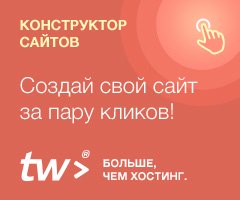by Phil O'Brien
Artist Chris Schanck has been on a journey from Pittsburg to Dallas to Detroit, with a little bit of Bangladesh thrown in — and has just arrived at Columbus Circle for his first solo museum exhibition. His labor intensive, bespoke furniture and furnishings — from chairs and tables to mirrors and lamps are on display at the Museum of Arts and Design (MAD) from today (Saturday, February 12, 2022).

“hey Eye of a Little God — one of Chris Schanck’s mirrors on show at MAD. All Photos: Phil O’Brien
W42ST met the artist in the third-floor gallery earlier this week to tour Chris Schanck: Off-World. The exhibit showcases what MAD calls his “striking, otherworldly furniture forms” made up of “elaborately carved, colorfully hued, and lustrous objects.”
Schanck explained the origins — and Bangladeshi connections — to many of his works: “I live in a part of Detroit that is about 90% Bangladeshi — the city has recognized it and called it Banglatown. If you take the neighborhood as a context, there are single-family clapboard homes that were built in the 1920s to last a single generation for people moving in to work in the nearby Ford automotive factory. So here we are in 2022, and the same houses are still standing that were never meant to last more than 15 or 20 years and that means they’re in a constant state of entropy and repair. They repair their fences, their home and their gardens with what’s available out of necessity and inventiveness. So, you can find a whole fence in an alley and each pole is from a bed and a shovel and then something else.”

Curbed Vanity and Garden Chair — commissions for the Dallas Museum of Art.
Schanck is standing in front of a work called Curbed Vanity — a dialogue with a late-19th century Martelé dressing table — which was commissioned by the Dallas Museum of Art and completed during the pandemic. “This was made from found materials, ready at hand from the lot next door and it’s all latched and tied together which at first seems chaotic or unintentional but upon further inspections is very, very specific,” Schanck said as he explained how the table and chair in gleaming silver was created. “We made it as minimal as we could around a metal armature so it would be stable. After that, all of these materials are collected from the neighborhood. Like this is chain link fence — then we add material so it grows and becomes more obscure like when you see a tree growing into a fence, They come together.”
As he guided us around the pieces — shrouded with his signature fabrication process entitled Alufoil — he pointed out bits of lath and plaster, tarp, a bike lock — “there’s a spring from a bed. You don’t want to be too obvious, but if you look a couple things pop out that are recognizable,” he said.

Night Light: Possessed by Chris Schanck.
The found objects are all from his walk to work in a former factory. “Fortunately, the walk from my home to my studio is 0.9 miles, which I can do rather quickly. So, I can collect along the way to the studio. There’s a very special alley way across the street from me that’s rich in materials. The alleys stopped functioning for cars and just became dumping grounds. Then there’s huge lots where you saw people beginning to collect and categorize thrown away material, but then the business was abandoned. You can hop the fence and there are piles of electronics, automotive parts, office things, just kind of perfectly organized. It’s bizarre,” Schanck said.
Many of the pieces at the exhibit are on loan from private collections and are used practically as household items — the museum pieces can be slightly different. “It’s on the spectrum. So the chandelier that you’re hanging above your dining table functions quite well. You don’t have to interact with it. This piece for the Dallas Museum, we explicitly had a conversation that it was never going to be used. So they gave me a lot of liberty and stability so I could do lots of things that I normally couldn’t do. The mirrors function as a reflective surface, so no damage ever really needs to come to them and they are easy to use,” Schanck said.
Several of the exhibits were completed during the pandemic. We asked how that experience had been for him — “You know, despite the tragedy of COVID, for myself and most artists I speak with it was a breeze because you were just in the studio. I was able to spend a lot of time drawing. I love to draw. Drawing is probably the base of my practice. So I was able to spend hours and hours drawing. It’s how I begin to find ideas. So that was very luxurious,” he said, explaining how his Dallas Museum table and chair were delivered. “We did the opening at the height of COVID. I went there. There was no opening. I was only allowed to invite seven of my friends. So we had a very small, secret opening at the museum and then we went to the bar in the hotel where I was staying, which was empty. I think there were three of us.”

Artist Chris Schanck talks about the pandemic and Mortal Bench.
The pandemic inspired one of the largest pieces in the exhibition — Mortal Bench — a circular sofa topped with figures that are Schanck’s version of Death and the Maiden with a third illuminated god-like figure at the center. The artist talked about how he had sketched up the idea. “This was made specifically for the show at a time where I was talking to my grandparents who had gone through a time when there was smallpox in the country. This was a real hazard to people. Generations have lived through these types of things and they were saying that this is something that your generation is going to experience now,” he said. “But I went way back to the Renaissance, because at its height it wiped out half the population of Britain. It’s a ‘memento mori’ genre of imagery to remind you that you will die, but not to bring you down but to remember your life and to take advantage of it. While the science was extremely incorrect, I think they nailed the symbolism of what was happening. I find it obviously to be still quite relevant in the time we’re in.”
“Much as I hate to say this was inspired by that period, but why not? You know, it happened and it’s still happening and it’s real. Even if you go back to the time as the plague was ending, there was not a lot of literature about the plague. It was almost like let’s move on. Let’s forget. Let’s get back. You know, people haven’t changed in 2000 years, it’s the same thing,” said Schanck
We asked about the bright colors in his art. Did that have a Bangladeshi influence too? “If you walk around the neighborhood, the people are incredibly expressive in fashion. They are not conservative in any way. You can find some other conservative cultural things, but fashion is not one of them. Two of my assistants from the neighborhood are Bangladeshi and they have this funny, I would say uplifting, habit that if they’re working on a particular piece in color, they will specifically start wearing garments of that color to connect to it. It’s this thing. It’s not discussed, but it’s an uplifting thing,” he said.

Chris Schanck’s work will be at MAD on Columbus Circle until January 8, 2023.
The exhibition, which has been guest curated by the Director of the Cranbrook Art Museum Andrew Blauvelt, will be on view until January 8, 2023. Coinciding with the show, MAD is hosting a year-long public program series in which artists and designers will explore the creative potential of industrially produced items discarded every day in the streets of New York City. Collaborators Thomas Barger, Shari Mendelson and Studio Nito will lead participants in hands-on workshops to transform trash into raw materials for art and design. This summer, MAD will engage its visitors to create a floating sculpture of discarded plastic bags called a Museo Aero Solar, an open-source project initiated by Tomas Saraceno.
Our final question was about the exhibition name — Off-World. Schanck replied: “One description that I made up for it was to find oneself in a completely unknown context. Faced with the unknown. I think all of us could relate to that idea over the past couple of years.”

Chris Schanck’s Furniture Brings Art, Design, Trash and Color to MAD
https://customsbmx.com/chris-schancks-furniture-brings-art-design-trash-and-color-to-mad/
Artist Chris Schanck Wants to Transform Your Living Room Into Something Otherworldly
https://www.interviewmagazine.com/art/chris-schanck-shuddering-nikita-gale










